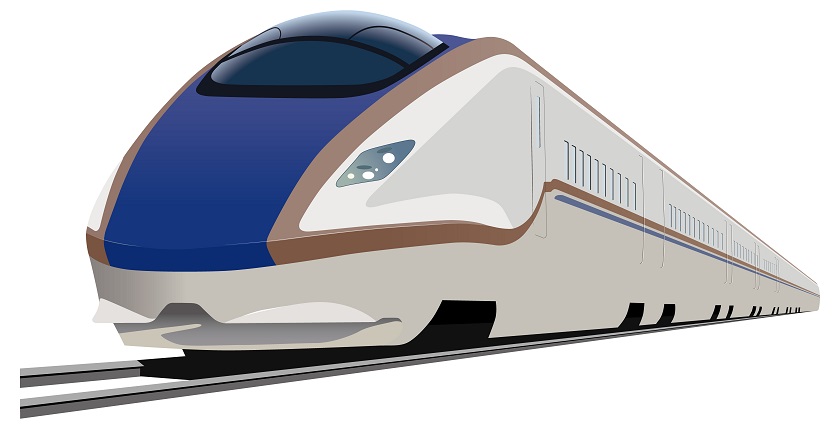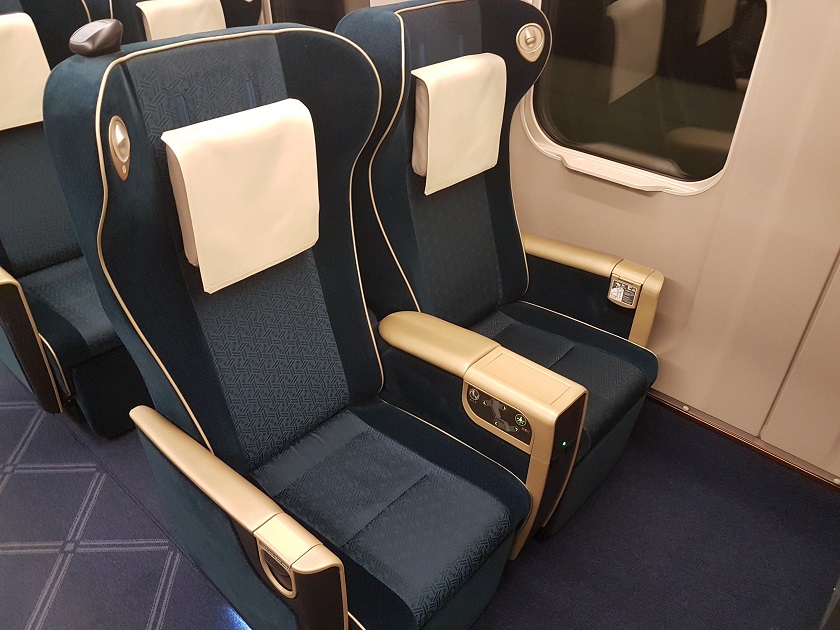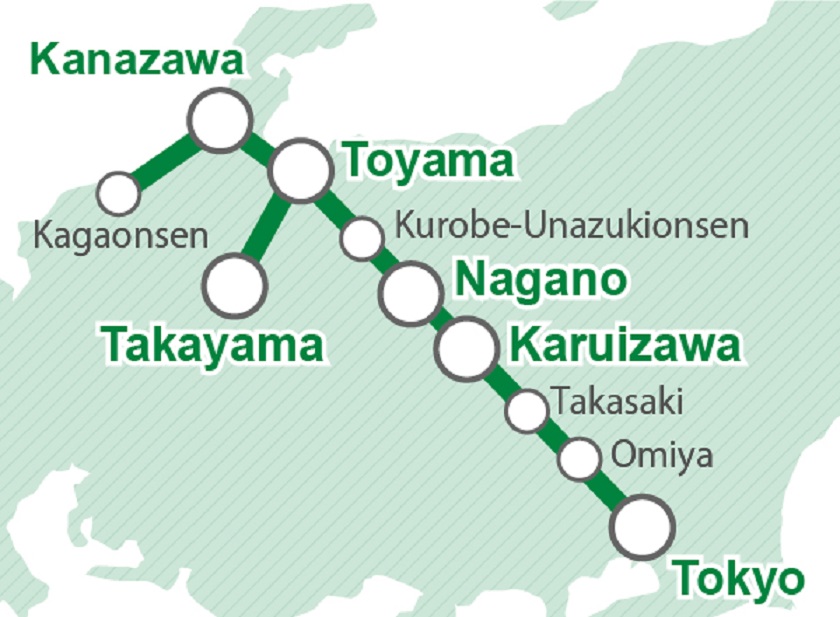The Nagano & Hokuriku Shinkansen is a high speed bullet rail line that stretches from Tokyo to Kanazawa. Major stops along the way include Nagano, Iiyama and Toyama. The line is popular to visit Kanazawa, Takayama, the Hokuriku area and Japanese Alps. The line is jointly operated by JR East and JR West.
History and naming of the Nagano & Hokuriku Shinkansen
First opened in on 1 October 1997, the line connected Tokyo to Nagano. This is where the original name comes from, the Nagano Shinkansen (長野新幹線). The line was extended to Kanazawa, which opened on 14 March 2015 and the name was subsequently changed to Hokuriku Shinkansen (北陸新幹線), named after the Hokuriku area that the line travels through. Though the line officially was always Hokuriku Shinkansen, JR East preferred the name Nagano Shinkansen before the extension to Kanazawa was made, mainly to avoid confusion for its customers. While the name Nagano Shinkansen can still be seen at places like Tokyo station, it has mostly fallen out of use. We will also be referring to the line as the Hokuriku Shinkansen from here on.
Train services on the Hokuriku Shinkansen

There are four train services on the Hokuriku Shinkansen. These are:
- Kagayaki Shinkansen: The fastest train service between Tokyo and Kanazawa in just 150 minutes. Stopping only at the most important stations on the route, like Nagano and Toyama. The Kagayaki Shinkansen is one of the few trains that has reserved seats only. Seat reservations can be made for free at any JR Station using the JR Pass.
- Hakutaka Shinkansen: Stopping at most stations along the Hokuriku Shinkansen from Tokyo – Kanazawa. This is the standard service alone the whole line.
- Tsurugi Shinkansen: In service from Nagano – Toyama, the Tsurugi Shinkansen is a shuttle service at stops at every station along the route.
- Asama Shinkansen: Tokyo – Nagano, the Asama Shinkansen is a shuttle service at stops at every station along the way.
Can I use the JR Pass on the Hokuriku Shinkansen?
Yes, all trains on the Hokuriku Shinkansen line are covered by the Japan Rail Pass. This includes the super fast Kagayaki Shinkansen.
Furthermore, the following regional JR passes can be used (partially) along the route:
The Osaka – Tokyo Hokuriku Arch Pass: Valid on the entire Hokuriku Shinkansen line and great for travel for those who want to travel between Tokyo – Kyoto/Osaka and make a stop or two along in cities like Kanazawa or Nagano.
Hokuriku Area Pass: Valid for non-reserved seats on the Hokuriku Shinkansen between Kanazawa and Kurobe-Unazuki Onsen stations.
Takayama – Hokuriku Area Pass: Valid for non-reserved seats on ordinary cars for the Hokuriku Shinkansen between Toyama - Kanazawa station.
Future of the Hokuriku Shinkansen
Plans and construction are currently underway to extend the Hokuriku Shinkansen to Fukui and Tsuruga by 2022. Long term plans for the line include extending the line to Obama city, Kyoto and Shin-Osaka. Construction of the further section after Tsuraga is expected to start in 2030 and is expected to take 15 years to complete, now that is long term planning!
Green Seats (1st Class) on the Hokuriku Shinkansen:
All trains on the Hokuriku Shinkansen come equipped with Green seats and operate a 2×2 seating layout, as to a 2×3 seating layout in ordinary class. Green Seats are extra comfortable, have more space, inseat power outlets for charging and laptop use.

Hokuriku Shinkansen Map

Map with the most popular stops along the route. Note that Takayama is pictured because it is a popular visit in the area but is not actually on the Shinkansen line.
WiFi on the Hokuriku Shinkansen
JR East and JR West have started the introduction of free WiFi on the Hokuriku Shinkansen since 2018. However the service is currently only limited to the fastest services along the line and full introduction is likely to be completed by 2022.
Should you wish to make use of unlimited WiFi with a guaranteed connection, then we recommend using a Pocket WiFi in Japan which can be connected to any WiFi capable device.




